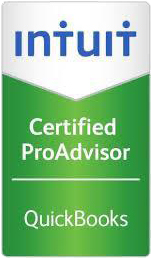With health care, housing, food, and transportation costs increasing every year, many retirees on fixed incomes wonder how they can stretch their dollars even further. One solution is to move to another state where income taxes are lower than the one in which they currently reside.
While federal tax rates are the same in every state, retirees may find that even if they move to a state with no income tax, there may be additional taxes they’re liable for including sales taxes, excise taxes, inheritance, and estate taxes, income taxes, intangible taxes, and property taxes. Retirement benefits are also treated differently in every state and many retirees also have additional income from a job.
Even if you’re not retired yet, if you are working remotely due to COVID-19 and are close to retirement age you may also be considering whether to make a move right now.
If you move to a different state but are still working for an employer in the state you formerly resided in, you will be subject to income tax in that state (as a nonresident) because your employer is located there.
If you’re thinking about making a move to another state, here are six things to keep in mind:
1. Income Tax Rates
Retirees planning to work part-time in addition to receiving retirement benefits should keep in mind that those earnings may be subject to state tax in certain states, as well as federal income tax if your combined income (individual) is more than $25,000. Combined income is defined as your adjusted gross income + nontaxable interest plus 1/2 of your Social Security benefits. If you file a joint return, you may have to pay taxes if you and your spouse have a combined income that is more than $32,000. If you see this scenario in your future, it may be in your best interest to consider a state with low income tax rates (Pennsylvania, Arizona, or New Mexico for instance) or no income tax such as Florida, Nevada, Alaska, Washington state, or Wyoming.
2. Income Tax on Retirement Income
Retirement typically income includes social security payments, retirement plan distributions, and income from pension plans. Income tax rates for Social security payments and income from retirement plans and pensions vary for each state. Some states do not tax this income at all, while in other states, a portion of pension income is exempt, while other states tax pension income in its entirety. State tax laws, like federal tax laws, are always changing. Please call if you have any questions about tax law changes in your state
Even if you live in a high-tax state, many offer significant tax benefits for senior citizens.
3. Tax on Social Security
In 2020, thirteen states tax Social Security income in addition to taxing social security income at the federal level; however, there may be exceptions depending on age or income level. Some states treat the taxation of social security benefits the same as federal taxation. Moving to a state that doesn’t tax Social Security is tempting, but keep in mind that tax rates on Social Security payments are just one factor to consider.
4. State and Local Property Taxes
Despite a decline in property values, property taxes have not decreased for most homeowners. Some states, however, offer property tax exemptions to retirees who are homeowners and renters. Again, this varies by individual state.
5. State and Local Sales Taxes
State and local sales taxes may or may not be a factor in the overall decision about where you decide to retire, but keep in mind that only five states, Alaska, Delaware, Montana, New Hampshire, and Oregon, do not impose any sales or use tax.
6. Estate Taxes
Estate tax may or may not matter, depending on your estate and whether you care about what happens to your estate after you die. Like other state taxes, estate tax varies depending on which state in which you reside. In some states, there is a tax on estates below the federal threshold amount ($11.58 million in 2020). Many states have no estate tax whatsoever, including North Carolina, Delaware, Florida, Kansas, Oklahoma, and Arizona.
The Bottom Line
When it comes to retirees, relocating, and taxes, there are several factors to consider – including the overall tax burden. As you’ve read here, not all states are created equal. If you’re thinking about retiring to another state, please contact the office and make an appointment with a tax professional who will help you figure out which state fits your particular circumstances
Health Coverage Terms Employers Should Know
Under the Affordable Care Act, certain employers – known as applicable large employers – are subject to the employer shared responsibility provisions. You might be thinking about these topics as you make plans about 2021 health coverage for your employees.
If you are an employer that is subject to the employer shared responsibility provisions, you may choose either to offer affordable minimum essential coverage that provides minimum value to your full-time employees and their dependents or to potentially owe an employer shared responsibility payment to the IRS.
Here are definitions of key terms related to health coverage you might offer to employees:
Affordable coverage: If the lowest cost self-only health plan is 9.5 percent or less of your full-time employee’s household income, then the coverage is considered affordable. Because you likely will not know your employee’s household income, for purposes of the employer shared responsibility provisions, you can determine whether you offered affordable coverage under various safe harbors based on information available to you as the employer.
Minimum essential coverage: For purposes of reporting by applicable large employers, minimum essential coverage means coverage under an employer-sponsored plan. It does not include fixed indemnity coverage, life insurance, or dental or vision coverage.
Minimum value coverage: An employer-sponsored plan provides minimum value if it covers at least 60 percent of the total allowed cost of benefits that are expected to be incurred under the plan.
Please call if you have any questions or need more information about the employer shared responsibility provisions.




